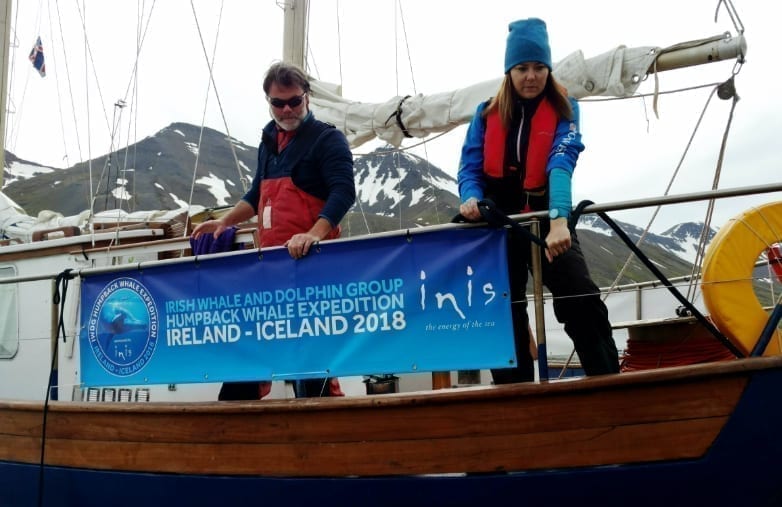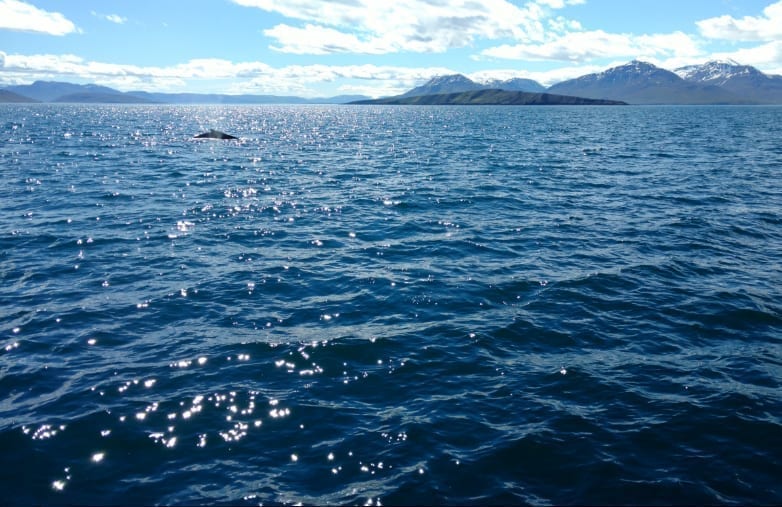THE HISTORY
Since 2001, it has been our honour to be the core funder of the Irish Whale and Dolphin Group – dedicated to the protection, conservation and better understanding of whales and dolphins in Irish waters and across the world.
Their work helps ensure that the seas of the world will continue to be a source of delight and joy for generations to come.
For more information on how to help protect our oceans please visit seathebeauty.net
Iceland Humpback
Whale Research Expedition
In 2018, Inis sponsored the Irish Whale and Dolphin Group Ireland to Iceland Humpback Whale Research Expedition.
Researchers on this voyage of discovery used photo identification to gain further insight into the growing whale population between the two island nations. Dr. Simon Berrow, Chief Science Officer with the IWDG, described the goals of the trip: “We will work in collaboration with colleagues in the Icelandic Marine and Freshwater Research Institute and the University of Iceland with the aim of promoting links with coastal communities, combining our knowledge and resources to more effectively carry out our shared responsibilities towards humpback whale conservation and management.”
David Cox, Managing Director of Inis the Energy of the Sea – Fragrances of Ireland, explains the synergy between Inis and ocean conservation efforts: “It’s a natural fit for us to fund this expedition and the IWDG. The full name of our signature collection is Inis the Energy of the Sea. Inis was inspired by the sea, so it’s nice to give back, in our small way, to the source of that inspiration.”


Whale Watch Ireland
Each summer Inis sponsors the IWDG Annual All Ireland Whale Watch event, which takes places at various headlands in coastal counties around the country.
All local watches are be led by experienced IWDG researchers, enthusiasts and whale watchers, who advise how to observe and identify some of the more commonly recorded cetacean species seen in Irish waters.
The purpose of whale watch day is to raise awareness of the 25 species of cetaceans (porpoises, dolphins and whales) recorded to date in all Irish waters, by giving the public an opportunity to look for and observe some of these wonderful marine mammals in their natural environment. This event also provides IWDG researchers with a unique snapshot of whale and dolphin activity around the Irish coast. Further details on www.iwdg.ie
LAVENDER
Little Sugarloaf and
our Lavender Fields
About 20 years ago we purchased about 170 acres of open hillside and woodland close by our premises in Kilmacanogue, Co. Wicklow.
This land includes the summit and south-western slopes of the Little Sugarloaf Mountain (well it’s really more of a hill, but we like to think big in Kilmacanogue). The Little and Great Sugarloaf mountains stand astride the village of Kilmacanogue as guardians of the road south from Dublin which runs between them. This really marks the beginning of County Wicklow and is where suburban Dublin meets the country.
We bought the land to keep it for nature and to allow people to enjoy it responsibly, so we have built a walking pathway to the summit through our lands in conjunction with various local organisations and other than that have left it all to nature. Yellow-flowering gorse grows widely lower down the slopes giving way to pink and purple heather on higher ground, native trees are self-seeding throughout and birds, insects and wild animals large and small are plentiful.
We are investigating the possibility of further planting of native woodland trees in a portion of the site in order to accelerate the greening of the site with ensuing benefits for wildlife and carbon capturing.
Further down these slopes, by the side of the road, lies our Lavender Field which we planted in 1996 with thousands of lavender plants and which blooms purple every July. We run our Lavender Harvest Sale from the end of June to the end of July each year, where we sell fresh bunches of lavender, dried lavender flowers, lavender oil, soaps and much more.
We have many beehives under the trees in our lavender field and the bees collect pollen from the flowers in the lime trees bordering the field in early summer, from the lavender flowers in July and from the heather flowers on the Little Sugarloaf slopes in late summer.


